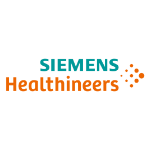Predictive prevention and personalised interventional stroke therapy
P3-Stroke improves imaging technology to address stroke and cardiac arrhythmia, two diseases that affect a large population group. It uses an innovation that combines flat-panel angiography and state-of-the art MR imaging to guide minimally invasive treatment and improve preventive screening.
Origins
Stroke is a leading cause of mortality, morbidity and severe long-term disability, making it a major cost factor in European healthcare systems. Since “time is brain” – the average stroke patient loses up to 2 million neurons per minute – delays in stroke management should be minimised. To address this clinical need, we are developing a unique hybrid Angio-MRI system, combining state-of-the art MR imaging with interventional flat-panel angiography.
Team
P3-Stroke comprises an international and interdisciplinary consortium including radiologists, cardiologists, computer science engineers, medical physicists and engineers from University Clinics Erlangen, Bordeaux University Hospital, Friedrich-Alexander University Erlangen-Nuremberg, KU Leuven, Coimbra Health School and Siemens Healthineers.
The project
P3-Stroke is developing and deploying new medical imaging technology to:
- speed up the clinical workflow for endovascular treatment in acute stroke management;
- increase the safety and effectiveness of radiofrequency ablation treatment for cardiac arrhythmia.
The technology will be used to guide minimally invasive interventions, thereby improving treatment of these two conditions, which are often related. The Angio-MR uses X-ray imaging, which offers high resolution for visualising the vascular system and medical devices, in combination with MRI, which allows better visulaisation of soft tissue and anatomical and physiological information. Using these technologies together enables more precise and efficient treatments and leads to improved patient outcomes.
To support dissemination of image-guided treatments, P3-Stroke is providing trainings on X-ray and MR imaging in neuroradiology and cardiology to health professionals.

Impact
A huge number of patients can benefit from this treatment, including:
The 17 million people worldwide who become new stroke patients each year.
The patients with atrial fibrillation, a sometimes deadly cardiac arrhythmia that is linked to about 30% of strokes and is expected to impact 14-17 million Europeans by 2030.
Improved treatment of strokes and arrhythmias is expected to have a major social impact by lowering healthcare costs.
Why this is an EIT Health project
By promising to reduce the debilitating effects of stroke and cardiac arrhythmia, the P3-Stroke project promises to help achieve the EIT Health goal of healthier, more active ageing. The project is also in keeping with the EIT Health Focus Area of “Care Pathways” because it has the promise to greatly improve treatment of two specific diseases.
External Partners
Members

Partner classification: Education, Research
KU Leuven (together with University Hospitals Leuven) is a research-intensive, internationally oriented university that carries out excellence-driven research in health and care and is dedicated to build bridges between science, society and industry.


CLC/InnoStars: Germany
Partner classification: Education, Research, Hospital / University Hospital
Founded in 1743, FAU has a rich history. It is a strong research university with an international perspective and one of the largest universities in Germany, with 39,780 students, 265 degree programmes and 4,000 academic staff. At Universitätsklinikum Erlangen (the university hospital), 7.400 employees promote health and cure disease. With up-to-date equipment and science-based diagnostic and therapeutic procedures, the 24 departments of the FAU, 25 clinical departments, 19 institutes, and 21 independent departments at Universitätsklinikum Erlangen comprehend every field of modern medicine.
Friedrich-Alexander-Universität Erlangen-Nürnberg
Friedrich-Alexander-Universität Erlangen-Nürnberg, Schloßplatz 4, 91054 Erlangen, Germany
Key Activities in Research and Developement
Biomedical engineering, Life Sciences, Social sciences / health economics
Key Activities in Social Innovation
Healthcare provision
Key Activities in Business Creation
Incubation, Technology Transfer
Key Activities in Education
Entrepreneurship training, Technical faculties, Medical faculties


CLC/InnoStars: Germany
Partner classification: Business
Partner type: Core Partner
Siemens Healthineers is one of the world's largest suppliers of technology to the healthcare industry and a leader in medical imaging, laboratory diagnostics and healthcare IT.
Siemens Healthineers
Siemens Healthineers, Henkestraße 127, 91052 Erlangen, Germany
Key Activities in Research and Developement
Biomedical engineering, Life Sciences
Key Activities in Corporate Innovation
Med Tech, ICT, Diagnostics, Imaging
Key Activities in Social Innovation
Healthcare provision
Key Activities in Business Creation
Incubation, Finance & Investment, Business coaching, Testing & Validation
Key Activities in Education
Entrepreneurship training, Healthcare professional education/training
